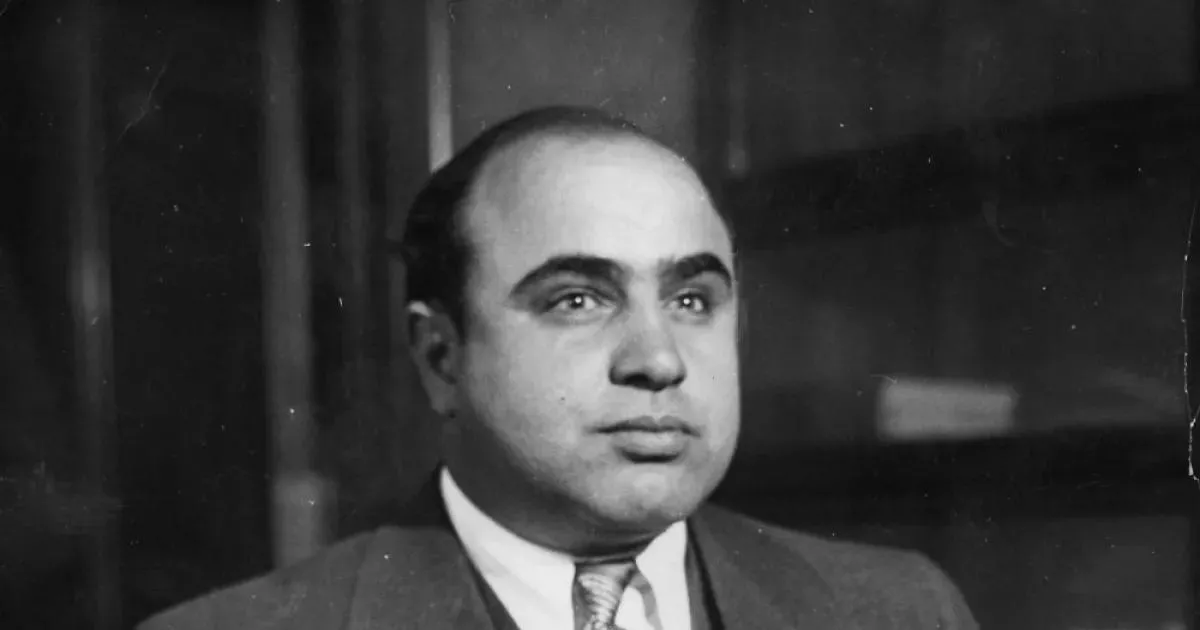An overview of the childhood and early education of Al Capone, highlighting the experiences that shaped the journey.
Alphonse "Scarface" Capone was a notorious American gangster and businessman. He rose to infamy during the Prohibition era as the boss of the Chicago Outfit from 1925 to 1931. Capone's criminal empire thrived for seven years until his imprisonment at the age of 33, marking the end of his reign as a powerful crime boss.
1916: Capone Plays Semi-Professional Baseball
From 1916 to 1918, Al Capone played semi-professional baseball, marking a period before his deep involvement in organized crime.
December 30, 1918: Capone Marries Mae Josephine Coughlin
On December 30, 1918, Al Capone, aged 19, married Mae Josephine Coughlin. Mae had given birth to their son, Albert Francis "Sonny" Capone, earlier that month.
1918: Capone Plays Semi-Professional Baseball
From 1916 to 1918, Al Capone played semi-professional baseball, marking a period before his deep involvement in organized crime.
1919: Capone Moves to Chicago
In 1919, Al Capone moved from New York City to Chicago at the invitation of Johnny Torrio to become an enforcer for crime boss James "Big Jim" Colosimo.
May 11, 1920: Murder of James "Big Jim" Colosimo
On May 11, 1920, crime boss James "Big Jim" Colosimo was murdered, and Al Capone was suspected of involvement in the crime.
1920: Death of Capone's Father
In 1920, Gabriele Capone, Al Capone's father, passed away. He was an Italian immigrant who worked as a barber.
May 7, 1923: Erroneous Report of Joe Howard's Death
In a 1936 article, the Chicago Tribune erroneously reported that hijacker Joe Howard was killed on May 7, 1923, instead of May 8, 1924.
1923: Capone Buys House in Chicago
In 1923, Al Capone purchased a small house at 7244 South Prairie Avenue in the Park Manor neighborhood on Chicago's South Side for $5,500.
April 1, 1924: Death of Frank Capone
On April 1, 1924, Salvatore "Frank" Capone, one of Al Capone's brothers, died. He was involved in Al's criminal empire.
May 8, 1924: Joe Howard Killed
On May 8, 1924, hijacker Joe Howard was killed after he attempted to interfere with the Capone-Torrio bootlegging business.
November 10, 1924: Murder of Dean O'Banion
On November 10, 1924, Dean O'Banion, leader of the North Side Gang, was murdered at his flower shop. The murder was arranged by Johnny Torrio, leading to a gang war with the North Siders.
1924: Capone's income tax evasion
On March 13, 1931, Al Capone was charged with income tax evasion for 1924, in a secret grand jury.
January 1925: Ambush on Capone
In January 1925, Al Capone survived an ambush. Following the ambush, Johnny Torrio was shot and effectively resigned, handing control over to Capone, who became the new boss.
November 1925: Lombardo Heads Unione Siciliana
In November 1925, Antonio Lombardo, Al Capone's consigliere, was named head of the Unione Siciliana. This angered Joe Aiello and led to a feud with Capone.
1925: Capone's income tax evasion
On June 5, 1931, Al Capone was indicted by a federal grand jury on 22 counts of income tax evasion from 1925 through 1929.
September 20, 1926: Attack on Capone's Headquarters
On September 20, 1926, the North Siders attacked Al Capone's headquarters at the Hawthorne Inn using Thompson submachine guns and shotguns. Capone was unhurt.
1926: NY Times Connects Capone to McSwiggin's Murder
In 1929, The New York Times connected Al Capone to the 1926 murder of Assistant State Attorney William H. McSwiggin.
January 1927: Kidnapping and Murder of Hawthorne Restaurant Owner
In January 1927, the owner of Hawthorne's restaurant, a friend of Capone, was kidnapped and killed by Bugs Moran and Vincent Drucci.
May 28, 1927: Attack on Aiello's Bakery
On May 28, 1927, Al Capone's men attacked Joe Aiello's bakery on West Division Street with machine-gun fire, wounding Aiello's brother Antonio. This attack was in response to Aiello's plot to poison Capone.
November 1927: Aiello's Failed Ambush Attempt
In November 1927, Joe Aiello organized machine-gun ambushes targeting Antonio Lombardo and Al Capone, but the plans were foiled by an anonymous tip. Aiello was later arrested but released with a police escort.
1927: Aiello's Bounty on Capone
During the summer and autumn of 1927, Joe Aiello offered a $50,000 bounty to anyone who eliminated Al Capone. Numerous hitmen tried to collect, but all failed and were killed.
1927: Thompson's Mayoral Victory
In 1927, Republican mayoral candidate William Hale Thompson won the election, allegedly with a $250,000 contribution from Al Capone. Thompson campaigned on a platform of not enforcing Prohibition.
April 10, 1928: Pineapple Primary Bombings
On April 10, 1928, during the Pineapple Primary, voting booths were targeted by James Belcastro, Capone's bomber, resulting in at least fifteen deaths. The bombings targeted wards where Thompson's opponents had support.
1928: Capone Buys Home in Palm Island, Florida
In 1928, Al Capone purchased a 10,000 square foot home at 93 Palm Avenue on Palm Island, Florida, for $40,000 from Clarence Busch of the Anheuser-Busch brewing family.
1928: Capone's income for 1928
In 1928, Al Capone's lawyer made admissions that Capone was willing to pay tax on income of $100,000.
March 19, 1929: Meeting at the White House
On March 19, 1929, Walter A. Strong, Frank Loesch, and Laird Bell met with President Herbert Hoover at the White House to request federal intervention to stem Chicago's lawlessness. President Hoover directed all the Federal agencies concentrate upon Mr. Capone and his allies
March 27, 1929: Capone arrested by FBI agents
On March 27, 1929, Al Capone was arrested by FBI agents as he left a Chicago courtroom after testifying to a grand jury investigating violations of federal prohibition laws. He was charged with contempt of court for feigning illness to avoid an earlier appearance.
May 16, 1929: Capone arrested in Philadelphia
On May 16, 1929, Al Capone was arrested in Philadelphia, Pennsylvania, for carrying a concealed weapon.
May 17, 1929: Capone indicted by a grand jury
On May 17, 1929, Al Capone was indicted by a grand jury and a trial was held before Philadelphia Municipal Court Judge John E Walsh. Capone was sentenced to a prison term of one year.
August 8, 1929: Capone transferred to Philadelphia's Eastern State Penitentiary
On August 8, 1929, Al Capone was transferred to Philadelphia's Eastern State Penitentiary.
1929: Capone's income for 1929
In 1929, Al Capone's lawyer made admissions that Capone was willing to pay tax on income of $100,000.
1929: NY Times Connects Capone to Murders
In 1929, The New York Times connected Al Capone to the 1926 murder of Assistant State Attorney William H. McSwiggin and the 1928 murders of chief investigator Ben Newmark and former mentor Frankie Yale.
March 1930: Capone listed as "Public Enemy #1"
A week after his release from prison in March 1930, Al Capone was listed as "Public Enemy #1" on the unofficial Chicago Crime Commission's widely publicized list.
April 1930: Capone arrested on vagrancy charges
In April 1930, Al Capone was arrested on vagrancy charges while visiting Miami Beach. He was later charged with perjury but acquitted in July.
1930: Ralph Capone tried for tax evasion
In 1930, Ralph Capone, Al's brother, was tried for tax evasion and spent the next 18 months in prison after being convicted in a two-week trial over which Wilkerson presided.
1930: Capone's letter to federal authorities
On the second day of the trial, July 30, 1931, Judge Wilkerson deemed that the 1930 letter to federal authorities could be admitted into evidence.
February 1931: Capone tried on contempt of court charge
In February 1931, Al Capone was tried on the contempt of court charge. Judge James Herbert Wilkerson sentenced Capone to six months, but he remained free while on appeal of the contempt conviction.
March 13, 1931: Capone charged with income tax evasion
On March 13, 1931, Al Capone was charged with income tax evasion for 1924, in a secret grand jury.
April 6, 1931: Anton J. Cermak winning the mayoral election
The Saint Valentine's Day Massacre led to public outcry about Thompson's alliance with Capone, and this was a factor in Anton J. Cermak winning the mayoral election on April 6, 1931.
June 5, 1931: Capone indicted on income tax evasion
On June 5, 1931, Al Capone was indicted by a federal grand jury on 22 counts of income tax evasion from 1925 through 1929 and was released on $50,000 bail. Capone was then indicted on 5,000 violations of the Volstead Act (Prohibition laws).
June 16, 1931: Capone pleads guilty to income tax evasion
On June 16, 1931, at the Chicago Federal Building in the courtroom of Wilkerson, Al Capone pleaded guilty to income tax evasion and the 5,000 Volstead Act violations as part of a 2+1⁄2-year prison sentence plea bargain.
July 30, 1931: Wilkerson refused to honor the plea bargain
On July 30, 1931, Judge Wilkerson refused to honor the plea bargain, and Al Capone's counsel rescinded the guilty pleas. On the second day of the trial, Wilkerson deemed that the 1930 letter to federal authorities could be admitted into evidence.
October 17, 1931: Capone convicted on income tax evasion
On October 17, 1931, Al Capone was convicted on five counts of income tax evasion and was sentenced to 11 years in federal prison, fined $50,000 plus $7,692 for court costs, and was held liable for $215,000 plus interest due on his back taxes.
1931: Belcastro Wounded, Police Suggest Independence
In 1931, after James Belcastro was wounded in a shooting, police suggested to journalists that he was an independent operator, indicating the attitude of local law enforcement toward Capone's organization.
March 1932: Frank Nitti Takes Over
In March 1932, Al Capone's underboss, Frank Nitti, assumed leadership of the Outfit after Capone's imprisonment for tax evasion.
May 1932: Capone sent to Atlanta U.S. Penitentiary
In May 1932, at the age of 33, Al Capone was sent to Atlanta U.S. Penitentiary where he was officially diagnosed with syphilis and gonorrhea. He was also experiencing withdrawal symptoms from cocaine addiction.
August 1934: Capone moved to Alcatraz Federal Penitentiary
In August 1934, Al Capone was moved to the recently opened Alcatraz Federal Penitentiary off the coast of San Francisco.
June 23, 1936: Capone stabbed in Alcatraz
On June 23, 1936, Al Capone was stabbed and superficially wounded by fellow Alcatraz inmate James C. Lucas.
February 1938: Diagnosis of Syphilis
In February 1938, while at Alcatraz, Al Capone was formally diagnosed with syphilis of the brain, marking a significant decline in his mental state.
January 6, 1939: Release from Alcatraz
On January 6, 1939, Al Capone completed his term in Alcatraz and was transferred to the Federal Correctional Institution at Terminal Island in California to complete his sentence for contempt of court.
November 16, 1939: Release from Prison and Referral to Johns Hopkins
Due to failing health, Al Capone was released from prison on November 16, 1939, and was referred to Johns Hopkins Hospital in Baltimore for treatment.
November 16, 1939: Parole
On November 16, 1939, Al Capone was paroled after his wife Mae appealed to the court, citing his diminished mental capacity.
March 20, 1940: Departure from Baltimore
On March 20, 1940, Al Capone, in poor health, left Baltimore after receiving inpatient and outpatient care and traveled to his mansion in Palm Island, Florida.
1942: Penicillin Treatment
In 1942, Al Capone was among the first American patients to be treated with penicillin, which slowed down the progression of his disease, though it was too late to reverse the brain damage.
1946: Mental State Assessed
In 1946, Al Capone was examined by his physician and a Baltimore psychiatrist, who concluded that he had the mentality of a 12-year-old child.
January 21, 1947: Stroke
On January 21, 1947, Al Capone suffered a stroke, leading to further health complications.
1950: Remains Moved to Mount Carmel Cemetery
In 1950, Al Capone's remains, along with those of his father, Gabriele, and brother, Frank, were moved to Mount Carmel Cemetery in Hillside, Illinois.
1952: Death of Capone's Mother
In 1952, Teresa Raiola, Al Capone's mother, passed away. She was an Italian immigrant who worked as a seamstress.
1952: Hoover Memoir Published
In 1952, the former President Hoover reported in his Memoir about his meeting on March 19, 1929 with Walter A. Strong, Frank Loesch, and Laird Bell and his directives to all the Federal agencies to concentrate upon Mr. Capone and his allies.
2004: Death of Albert Francis "Sonny" Capone
In 2004, Albert Francis "Sonny" Capone, the son of Al Capone and Mae Josephine Coughlin, passed away. He had lost most of his hearing in his left ear as a child.
Mentioned in this timeline
California is a U S state on the Pacific Coast...
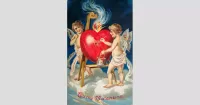
Valentine's Day observed annually on February th began as a...
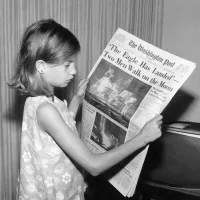
News encompasses information about current events disseminated through various media...
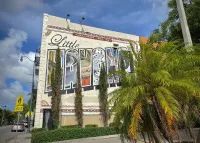
Miami is a major coastal city located in Florida United...
Florida a state in the Southeastern United States is largely...
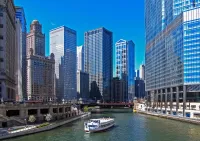
Chicago is the most populous city in Illinois and the...
Trending

7 days ago Karl-Anthony Towns Expresses Desire to Extend Stay with Knicks Amid Contract Stalls

6 days ago Bam Adebayo Unhappy with Anthony Davis Trade Rumors, NBA Volatility Impacting Players
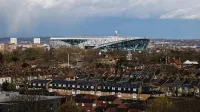
3 days ago Tottenham vs Brentford and Man City vs Sunderland: Premier League Football Action
7 months ago Galatasaray vs Kayserispor: Match Details, Championship Hopes, and Okan Buruk's Strategy

Mason Greenwood is an English professional footballer currently playing as a forward for Marseille in Ligue He rose through the...
4 months ago Eli Lilly's Obesity Pill Shows Promising Weight Loss Results in Phase 3 Trial
Popular
Matt and Ross Duffer known as the Duffer Brothers are...

Candace Owens is an American conservative political commentator and author...

Ilhan Omar is an American politician currently serving as the...

XXXTentacion born Jahseh Dwayne Ricardo Onfroy was a controversial yet...

Tom Cotton is an American politician and Army veteran currently...
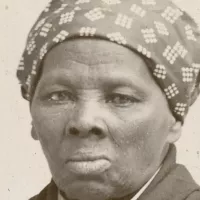
Harriet Tubman was a pivotal American abolitionist and social activist...
